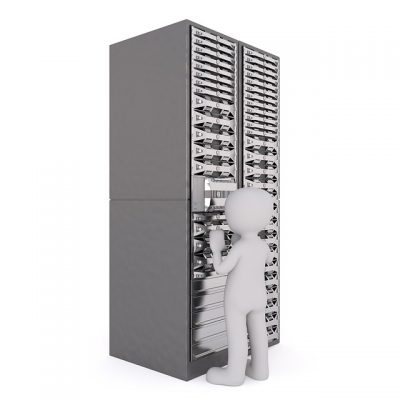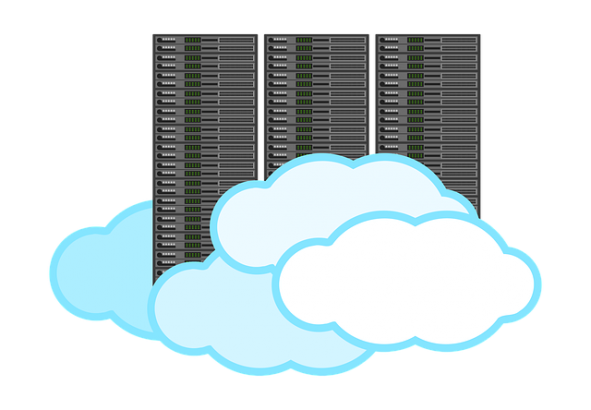Summer time is conference time in the IT world and anyone going to one or more of these events hears about the latest developments in cloud computing, wondering sometimes how to keep up with the sheer number of cloud services acronyms used in this industry.
So let us disentangle the secret code of cloud computing by having a look at what the meaning of the different services IaaS, PaaS, and SaaS actually is.
‘As a Service’
It is best to start explaining from the back of the acronyms – ‘aaS’ or also ‘as a service’ – as all of these refer to a cloud services offering from a cloud service provider. They, in general, represent the leasing of a certain resource for a determined or undetermined amount of time.
More importantly to understanding what you are really getting is the first letter.
The first letter represents the highest level the cloud service provider, in short CSP, is maintaining. Anything below that level is the responsibility of the supplier to maintain, update and secure while anything above this determined level is in your area of responsibility. Likewise, any configuration, software, and data below the level is indeed belonging to the CSP while, depending on your contract, you might regain ownership of anything on a higher level.
Now you notice that the difference between the cloud services IaaS, PaaS, and SaaS is obviously where in this application layer model the split is. So let us have a look at the different layers and at the same time decode the front part of these acronyms.
IaaS – Infrastructure as a Service
 The lowest level of cloud services you commonly find at a cloud service provider, such as Amazon AWS or Microsoft Azure, is ‘Infrastructure as a Service’. IaaS refers to the supplier offering nothing more than a virtual machine, storage, and network connectivity in their data center which is commonly referred to as server infrastructure. That’s why it is called IaaS.
The lowest level of cloud services you commonly find at a cloud service provider, such as Amazon AWS or Microsoft Azure, is ‘Infrastructure as a Service’. IaaS refers to the supplier offering nothing more than a virtual machine, storage, and network connectivity in their data center which is commonly referred to as server infrastructure. That’s why it is called IaaS.
Anything that is running on this infrastructure is your responsibility. This includes the operating system, and management system as well as any middleware, application and data.
Advantages of IaaS
The significant advantage of IaaS is that you can build a tightly integrated stack optimized for your requirements, similar to your data center. And the price for the leased resources is relatively low and easy to calculate.
Disadvantages of IaaS
The downside is that you are responsible for most of the updates and the configuration and management of the complete system. Costs are similar to the situation where your server is on-premise. You will pay a comparable small price for the IaaS offerings but you will not experience a significant reduction in staffing needs as the management of the operating system and the applications remain your responsibility.
IaaS and the Univention App Center
While porting your system over from one CSP to another is possible, it might require a certain amount of know-how given different backends at various service providers. Using UCS’s domain concept and automatic replication of data and configurations, administrators can simply join a new UCS system and automatically transfer most directory and user data.
Furthermore, these features also make using UCS easy for you on most IaaS platforms. Not only can you operate applications from the Univention App Center but, with the right planning, you can easily set up a central management system that can includes various UCS instances spread over multiple IaaS environments and/or your own data centers.
PaaS – Platform as a Service
A level above the bare infrastructure sits the operating system, short OS, such as UCS. PaaS offerings thus not only include the server infrastructure but also an OS system, which is maintained by the cloud service provider.
Advantages of PaaS
With transferring the responsibility for the OS to the cloud service provider, a lot of the underlying repetitive and administrative work can be offloaded. Particularly users requiring a very specialized application on a general purpose operating system, will have the advantage to focus solely on creating and managing their core product without having to worry about any of the underlying systems.
Cloud service providers such as Apprenda have ample experience of updating and managing operating systems without lasting interruptions. They know how to profoundly optimize the virtual infrastructure of the OS, thus minimize shortfalls and guarantee higher performances as it is with on-premise systems.
Disadvantages of PaaS
On the downside of PaaS are the higher fixed costs and, what might be even more important to consider, the loss of control over parts of your IT system. You cannot, for example, optimize the OS for the specific needs of your application. While some service providers will do this work for you, it often depends on the size of the client whether they do it or not.
UCS as a PaaS
Many cloud service providers are already offering UCS in their platform as a service cloud. Using UCS’ built-in automated rollout processes, customers can easily start and maintain their applications via the wizard in UCS’ web interface.
SaaS – Software as a Service
 Even one level above the operating system sits the application (software) itself. The highest level of provided cloud services. Most often a shiny, user-friendly web interface where you can enter and retrieve data.
Even one level above the operating system sits the application (software) itself. The highest level of provided cloud services. Most often a shiny, user-friendly web interface where you can enter and retrieve data.
Compared to IaaS and PaaS the buyer of a Software as a Service product typically isn’t looking for an IT resource such as a server but for a solution to a problem such as needing a groupware or an accounting system.
Advantages of SaaS
As the SaaS concept is a holistic solution, your management responsibilities are minimal and only penetrates to the user and compliance management. Anything behind the application that needs management such as regular updates is hidden from you, allowing a focus on the actual task without long work on the underlying system.
Disadvantages of SaaS
While SaaS products, such as Office 365 or Salesforce, greatly take the burden off the IT staff, they come with a heavy price tag.
One further big disadvantage of SaaS offerings is that usually all customers share one large IT environment that is often spread over several data centers. The storage of customer data is thus not transparent. This, in turn, most often requires the need for legal counsel when evaluating whether or not a particular offer is compliant with the regulatory requirements.
UCS’ role in SaaS
In conjunction with SaaS products, UCS provides many advantages, both for CSP and customers.
Its App Center provides an excellent platform for cloud service providers to roll out numerous SaaS applications to their customers. For you as a customer, UCS includes connectors to integrate and manage your cloud applications combining your on-premises user management with your cloud applications.
Conclusion
While confusing at first, choosing between the right cloud services does not have to be complex. It generally starts with asking yourself how much ongoing work you want to put into the system and whether it would make a difference if you do not have full control over the whole system. With these questions answered, you can quickly make the choice between the three ”as a Service” classes.
I hope I was able to give you a glimpse overview of the meanings behind IaaS, PaaS, and SaaS.

